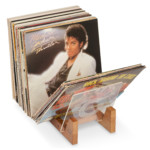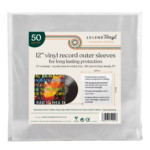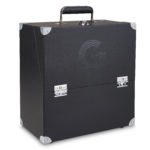Vinyl records have been delighting listeners and collectors since the 1900s. Since RCA Victor launched the first commercial vinyl long-playing record in 1930.
The first vinyl discs were made for playback at 33 1/3 rpm and pressed onto 12″ diameter flexible plastic discs. These were a commercial flop due to consumer hesitance during the Great Depression and a lack of consumer playback equipment. However, starting in 1939, Columbia Records continued to develop vinyl technology and in 1948, introduced the 12″ Long Play (LP) 33 1/3 rpm microgroove record.
The cutthroat rivalry between RCA Victor and Columbia Records led to the introduction of another competing format by RCA, the 7″/45 rpm Extended Play (EP). The period where both of these formats fought for dominance from 1948-1950 was known as the “War of the Speeds.”
After a few years of duking it out, the 12″/33 1/3 rpm LP became the predominant format for albums, and the 7″ record became the format of choice for singles. EPs offered a similar playtime to the 78 rpm discs, and LPs provided up to 30 minutes of playtime per side. In the early 1960s, consumers caught onto stereo LPs, and conventional mono LPs stopped being manufactured by 1968.




